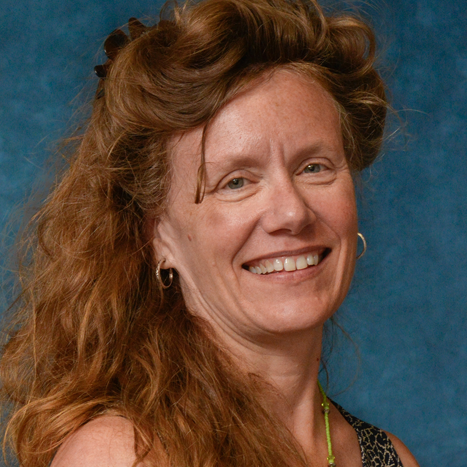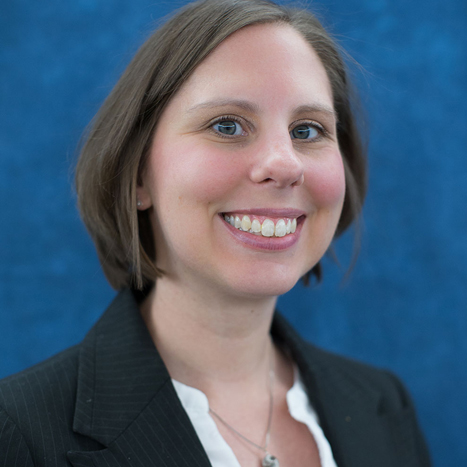Perspective: The Public Health Emergency and PACE, a Legacy of Flexibility
May 23, 2022
Anne Montgomery
Christine Stanik
On April 12, HHS Secretary Xavier Becerra announced a further extension of the public health emergency (PHE) for 90 days until mid-July 2022. Once announced, states and providers will have 60 days to determine whether flexibility measures put into place during the initial COVID-19 pandemic will continue as is, continue with modifications, or be discontinued entirely. Regardless of when it ends, officials at the Centers for Medicare and Medicaid Services (CMS) are actively working on details of how to wind down the PHE. Many provider organizations, such as the Program of All-inclusive Care for the Elderly (PACE), and advocacy organizations representing Medicaid and dually eligible beneficiaries, are on high alert, given that projections suggest as many as 13% of all Medicaid beneficiaries could lose their coverage once state eligibility redeterminations, which have been effectively suspended during the pandemic, recommence. Across the country, the PHE’s Medicaid flexibilities have helped millions who lost income and jobs during the most severe periods of the pandemic access health care, thus contributing to Medicaid enrollment growth of an estimated 20%. For more than two years, the federal government and states have deployed a range of disaster and other flexibility authorities (e.g., Appendix K, 1135 and 1115 Medicaid waiver authorities, State Plan Amendments, executive orders, guidance and more) to make it easier for individuals to enroll and to maintain coverage.
Equally important, providers have been granted unprecedented leeway during the PHE by CMS (among other agencies) to adapt their practices, notably by adopting remote care and delivering many more services in the home. Congress has authorized financial assistance through the Provider Relief Fund totaling $178 billion as of September 2021. In prior blogs, Altarum has detailed some of the innovations and adaptations that PACE organizations have developed and deployed to continue providing comprehensive coordinated care in a seamless manner to highly complex participants – many of whom could not leave their homes for extended periods of time.
During the last two years, PACE organizations have successfully adjusted their services to continue to reach their participants, whose constellation of needs include ongoing medical care, long-term services and support, and assistance with management of social determinants of health (e.g., accessible housing, transportation, and nutritious food). Our research project on COVID-19 adaptations funded by the Agency for Health Research and Quality (AHRQ) analyzes the multiple innovations that PACE programs have deployed, and we will publish findings later this year that compare outcomes attributable to PACE organizations with those of a closely matched Medicare fee-for-service (FFS) cohort.
PACE and home-based services
A key flexibility that PACE organizations are using during the PHE is provision of skilled nursing services in participants’ homes, rather than in the PACE center. Using various mechanisms, states have allowed PACE organizations to provide home-based skilled services reducing participants’ risk of exposure. Whether that will continue depends on regulatory interpretation. In California, which has the largest number of PACE organizations in the country, most PACE sites are licensed as adult day health centers, which were granted flexibility under state executive order to provide home-based skilled services. That order with its explicit flexibility will expire, however, on June 30, 2022. Depending on subsequent state regulatory interpretation, PACE center licensing may or may not be be permitted to continue home-based delivery of skilled services. If it is not, then California PACE organizations wanting to provide home-based services would need to seek a change in state policy, or to obtain a home health agency license if they do not currently have one.
Making enrollment in PACE easier
Another core flexibility that PACE organizations are making widespread use of is telehealth for assessments and verbal enrollment agreements. Due to reluctance on the part of many older adults to either go to a PACE center during the pandemic -- or to have multiple providers come into their home—this has been central to efforts to try to get people assessed and enrolled in a timely manner.
In Congress, a case for much greater PACE enrollment flexibility is being made by Sen. Bob Casey (D-PA) in S. 1162. The measure would allow for “anytime enrollment” effective on the date a PACE provider receives an eligible individual’s signed enrollment agreement. This same flexibility is included in S. 3626 introduced by Sen. Casey and Sen. Tim Scott (R-SC). Until then the practice of limiting PACE enrollment to the first of each month, in conjunction with nursing home level of care determinations, means that PACE enrollment can sometimes be challenging.
Remote care is here to stay
Broader telehealth flexibility is being sought by multiple types of providers at both the state and federal levels. Certain telehealth waivers implemented in connection with the PHE have already been legislatively extended for 151 days following the end of the PHE, with permanent changes possible given a flurry of recent telehealth legislative activity. Many PACE organizations are also seeking state policy flexibilities, which can then be leveraged in arguments for corresponding federal approval.
Broader implications and the contours of winding down the PHE were discussed at a March 30 Alliance for Health Policy webinar. Experts observed that all states have substantially ramped up use of telehealth and telehealth modalities in Medicaid, including telephone only and text-based communications, and some have implemented temporary payment parity for telehealth and in person services—19 states in total. Others have opted to provide payment parity for specific services and specific populations with varying sunset provisions. At this juncture, states are assessing telehealth costs, utilization, and performance data with an eye toward deciding which flexibilities to codify.
Panelists at the forum also noted that out-of-state providers offering remote care have filled gaps during the PHE that otherwise could have resulted in severe service shortages, Expanding the network of available providers via telehealth at a time when workforce capacity was ebbing has been particularly critical for people with disabilities and chronic conditions. For example, data show that telehealth has been central to the care of dually eligible beneficiaries, notably for tele-behavioral health visits, which became a lifeline for many as their behavioral health conditions worsened during the pandemic. As a result, states are now examining the feasibility of relaxing, or waiving, requirements for in-state licensure for providers, and/or granting temporary licenses for out-of-state providers, creating new pathways for licensure. To formalize this, some states are forming inter-state compacts.
The shape of things to come
One of the challenges that Medicaid programs face is that the end of the PHE could trigger a potential explosion in Medicaid redeterminations. All LTSS consumers face the threat of being deemed ineligible once the PHE expires which could, pending appeals, result in their losing critical services upon being disenrolled. For PACE participants, this type of interruption could be even more disruptive as these participants receive not only their LTSS services but their medical care through the PACE program.
The stance that CMS, and states, decide to take on PHE flexibilities announced by the federal government on March 17, 2020 will be a central issue in determining how PACE operates in the future. That guidance has allowed PACE organizations to use remote technology for “scheduled and unscheduled participant assessments, care planning, monitoring, communication, and other related activities that would normally occur on an in-person basis.” PACE is a proven program that could be used to devise ways of expanding and scaling home-based services for fast-growing complex populations who struggle with social determinants of health, and whose needs may be best addressed through equity-focused “accountable care” arrangements.
In closing, although still rocked by inflation-inducing international supply chain disruptions and conflicts, the U.S. economy has regained strength, and the PHE seems likely to end this year. As it approaches, a series of major developments are set to play out, and the legacy of federal and state flexibility that has assumed an outsize role in mitigating some of the worst impacts of COVID-19 on a highly stressed health care system will likely continue to re-shape and extend service delivery further into home-based settings over the long term.
Altarum is a nonprofit organization that works with federal and state agencies and foundations to design and implement solutions to improve the health of individuals with fewer financial resources and populations disenfranchised by the health care system. We achieve measurable results by combining our expertise in public health and health care delivery with technology, workforce training and continuing education, applied research, and technical assistance. Our innovative solutions lead to better health for beneficiaries and better value for payers.

Perspective

Anne Montgomery - MS
Program Director, Delivery System Transformation
Areas of Expertise- Long-Term Services and Supports
- Medicare, Medicaid, the Older Americans Act, and other programs
- Social Determinants of Health in Older Adults
Anne Montgomery develops policy and research initiatives that improve long-term services and supports and medical care for older adults receiving services from Medicare, Medicaid, the Older Americans Act, and other programs. She is co-leading efforts to implement and evaluate comprehensive culture change and quality improvement in nursing homes and is working with colleagues to develop a new volunteer-based Community Care Corps program at the national level. Anne conducts workforce policy analysis for home and community-based services (HCBS) and advises on how to expand models of community-based care for older adults requiring complex services.

Christine Stanik - PhD
Program Director, Delivery System Transformation
Areas of Expertise- Mixed-Methods Research
- Care of Older Adults
- Evaluation of Systems Level Interventions
As a psychologist, Christine brings a research and evaluation perspective to improving care services for elders and the disabled at a systems level. Through the design and execution of unique research protocols and tools, she works to build an evidence base for best practices around quality-of-life improvement and the person-centered care model. Using insights gained through empirical methods, she advocates for PACE expansion and comprehensive culture change in nursing homes.
